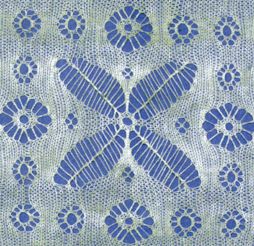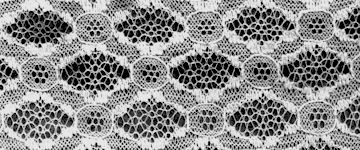 Thomas Pollard - Beginnings -
The purchase of a house for his father1 by Thomas Pollard in 1830 provides our first record of the family connection with lace; the deeds include
a note that Thomas formerly worked as a servant for Needham of Lenton, lace maker, whom we have been unable to trace2. A directory of
1832 lists Thomas as a frame and machine smith and the 1841 census as a lace maker in Villa Street. He worked three wooden (hand operated) machines
in the stables of a Villa Street house, which we think was number 31, on the corner of Cross Street and Villa Street3 opposite the factory.
Thomas Pollard - Beginnings -
The purchase of a house for his father1 by Thomas Pollard in 1830 provides our first record of the family connection with lace; the deeds include
a note that Thomas formerly worked as a servant for Needham of Lenton, lace maker, whom we have been unable to trace2. A directory of
1832 lists Thomas as a frame and machine smith and the 1841 census as a lace maker in Villa Street. He worked three wooden (hand operated) machines
in the stables of a Villa Street house, which we think was number 31, on the corner of Cross Street and Villa Street3 opposite the factory.
Headed notepaper for the firm, produced c1904, dates the start of Pollardís factory in 1858, perhaps twenty years after Thomas began making lace in
Beeston. It was a slow start and the 1851 census shows the modest nature of the business, with Thomasís wife Anne a winder, son John, aged 12, a
"lace maker/scholar" and daughters Mary Anne and Isobella, 15 and 9, "lace mender" and "threader/scholar" respectively.
They were just one amongst many similar families in Beeston; on Villa Street alone there were 27 lace makers (and four lace manufacturers, including
Thomas Elliott), eleven framework knitters, three frame or machine smiths and many others in textile trades; there were also five agricultural labourers,
which together with Thomas Elliottís farm, shows that Beeston had not yet lost contact with the land.
Thomas Pollard had at least two advantages over most contemporary lace makers; he seems to have been relatively well off, with his houses on Chapel
Street, and he had an able and energetic son. By the time Thomas died in 1880, he had seen the firm prosper and his son grow rich.
All the lace illustrated was made at the Pollard's factory
1 It is perplexing that Thomas could afford to buy the house, but as four more were built on the site it may have been a profitable
speculation. The houses were sold by Arthur Pollard in 1922 (information from John Pollard jnr).
2 A Nottingham lace manufacturer, Needhams and Renshaw, is listed in Pigotís 1828 Directory - information from Sheila Mason.
3 Information from John Pollard jnr. A newspaper account of John Pollards funeral (1903) records that the machines were in the stables of
what was in 1903, Mrs Coxís house. Directories show that this was Ivy House in Villa Street.
Click to read the next chapter
or -
Click here to go back to the top
|
 |


